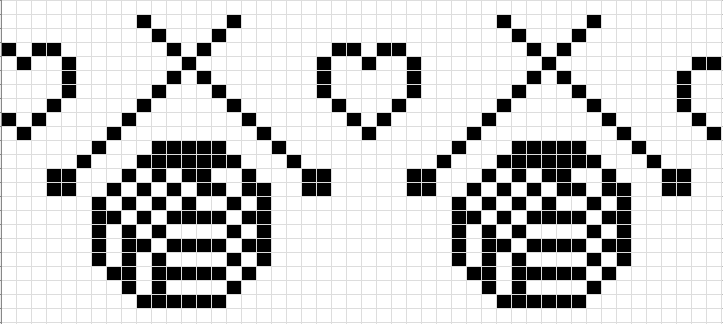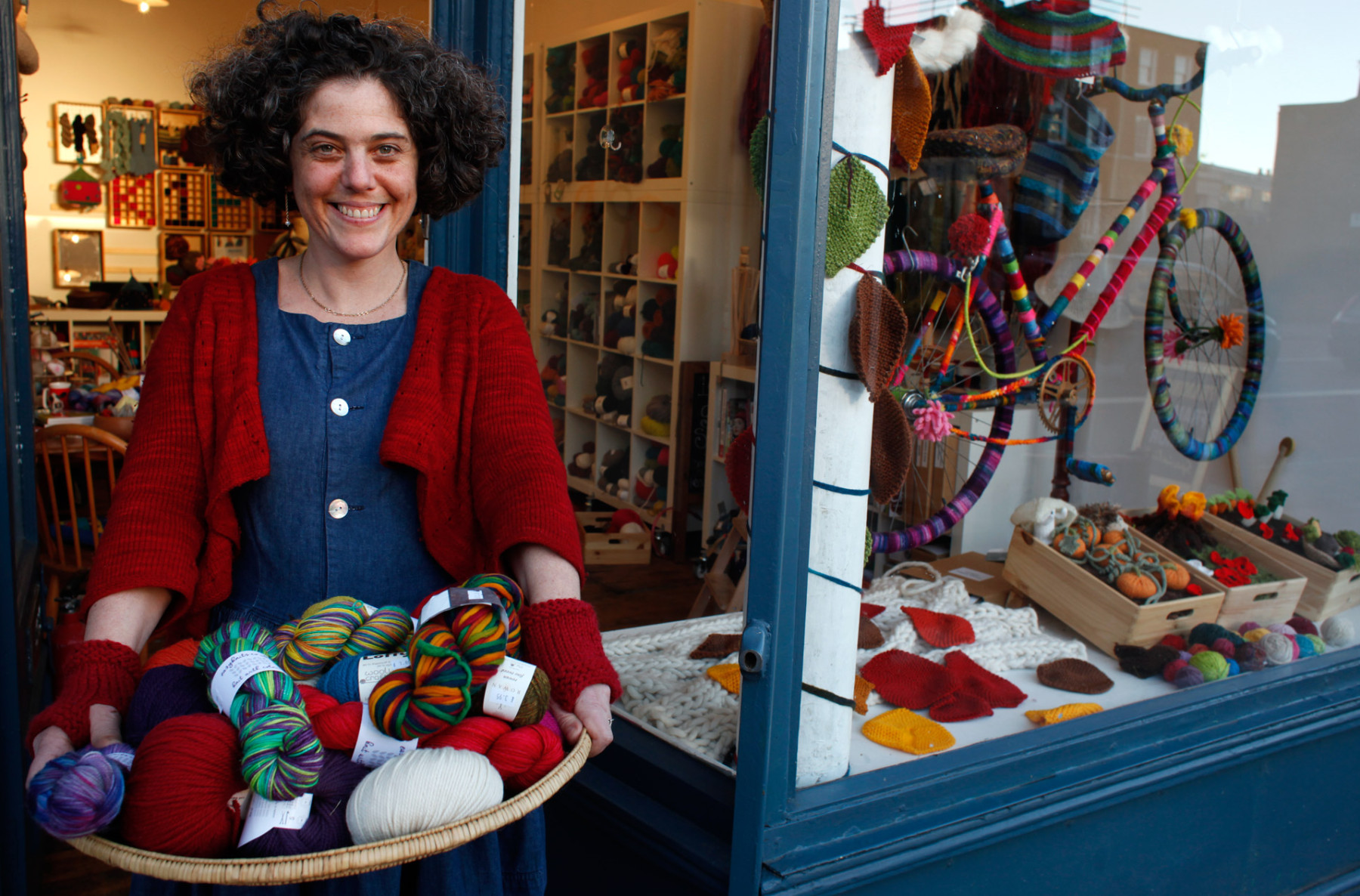“We welcome […] knitters who are above gauge, below gauge and never check their gauge’
I wrote that when I was working on the shop’s Welcome Page a couple of years ago. I’d become used to people telling me about their gauge in an apologetic almost confessional tone. And this line was my way of saying I don’t mind what your gauge is. As far as I’m concerned, your knitting is worth it regardless of how big the stitches are.
But whatever I don’t feel about knitters in regards to their gauge, I do care about gauge – it’s just not in a right and wrong knitter sort of way. I’m going to try and explain..
You knit with a certain amount of tension that has to do with your hands and your brain, in much the same way as how hard you press on a page when you write with a pencil. You can’t really change it and that, along with the wool and size of needles you’re using, decides how big your knitted stitches are going to be – how wide and how tall. There isn’t a wrong gauge or a good gauge or even an ‘on-gauge’. There’s just your gauge – created by the interplay between your tension, your yarn and your needles. The first one you can’t change, and the second two you can.
But hang on, if the gauge is a brain-hands thing, how does the yarn’s ball-band know what gauge its stitches will be? Ok, this is where we have to concede a little knitterly normativity (but only a little). The ball band data writers are products of our stocking-stitch centric world, where moderately flexible fabric dominates. And they have decreed that normal gauge exists when the wool is making a closed knit stitch that daylight cannot shine through, whilst at the same time creating a fabric which is loose enough to be comfortable for a moving body to wear. The ball band gives that gauge, not the gauge, for you may well prefer to knit the wool really loosely to diffuse the light and give space to the lovely halo of the fibre, or perhaps really tightly so that the fabric is good and firm, so that you can create more shape and structure. Then there’s the gauge that the pattern designer has decided is just right for their design – the one that’s going to give it the look of the one in the picture.
So….so far we’ve got the gauge the designer has based the pattern calculations on, we’ve got the gauge on the ball band of the wool that you want to knit with and we’ve got the gauge that you get when you use the recommended needle size with that wool. What if they’re all a bit different? Does that mean that someone is ‘wrong’? This is the bit where I’m going to turn left and talk about pastry making for a while but you can substitute in more or less any recipe you enjoy cooking (it doesn’t have to be a pie). So you’ve mixed up the ingredients according to the instructions, and now you need to roll it out. If it feels too sticky, you’ll add some more flour – or if it’s too dry and hasn’t yet formed a ball, you’ll add a drop more water. You make adjustments which are compensating for the multitude of things that are different about your cooking from the recipe writer’s – like the moisture in the air, the type of flour you’re using, the size of the eggs you’ve got. But you’re not thinking about any of those conditions – what you’re thinking about is the pastry and how it feels, and what to change to get it to feel right.
You see where I’m going with this? The numbers definitely matter – they give us a key to following the path of the pattern, but there’s something else and that’s the fabric we’re making in our hands – how it feels and what to do to make it feel right. That’s the part of the knitting which is between you, your needles and your wool. I’m always here to help you work it out, but I won’t tell you what is wrong or right. That bit is up to you.



1 comment for “Let’s talk about gauge baby”